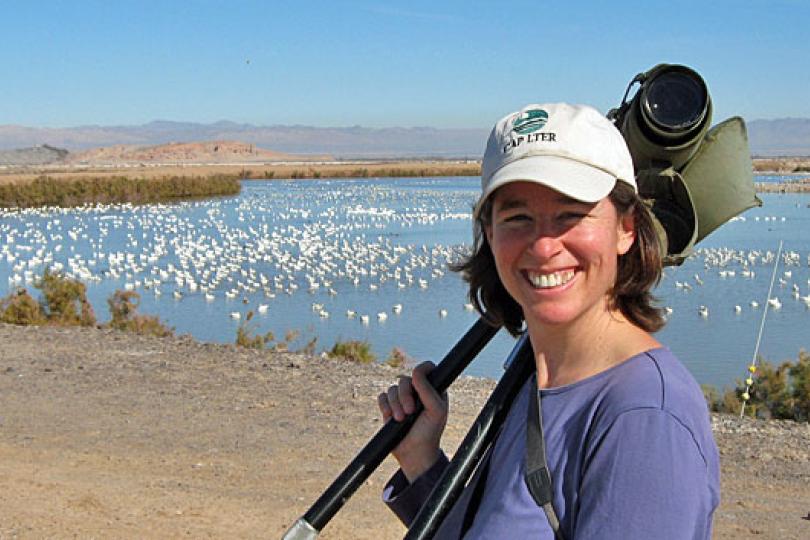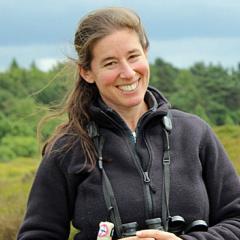Creating Urban Habitat for Birds
When you look at your yard, you probably see some grass, a few flowers, maybe a bird or two. Susannah Lerman, 2010 Fellow and 2011 Leadership Grant recipient, sees a huge opportunity for wildlife habitat with little or no investment. Lerman began her career wanting to work with species in remote areas, but she soon realized that cities offer the best opportunities for educating people about nature. Now she finds ways to increase citizen participation in increasing wildlife habitat and reconnect people with nature, particularly in urban areas. She partners with the Smithsonian Migratory Bird Center and heads their Neighborhood Nestwatch project in Springfield, MA, a citizen science project to study nesting populations of common backyard songbirds in the yards of 100 volunteer families across western Massachusetts.
In 2011 the Switzer Foundation also funded Lerman’s work with the USDA Forest Service’s Northern Research Station and the University of Massachusetts – Amherst on the Urban Wildlife and Biodiversity Initiative with a $40,000 Leadership Grant. In that project Lerman assessed how well the urban forests provide good habitat for birds. She used data from the USDA Forest Service's urban forest assessment tool, i-Tree, which calculates the ecosystem services provided by urban forests. She then built habitat relationship models that included features such as the amount of dead wood available for nests and urban tree cover in order to develop an overall picture of urban forest biodiversity. The models calculate the habitat potential of the urban forest at a city-wide scale by linking the models with i-Tree data, which is collected by professional and trained citizen scientists. Once the habitat models are integrated into i-Tree, the tool will be applicable to a broad range of users including forest managers, municipalities, planners, students and volunteers. The tool will guide habitat management projects that aim to further improve the urban forests to better support bird populations and urban biodiversity. Lerman's habitat modeling work is described in a recent article in the journal Landscape and Urban Planning.
In the future, Lerman wants to help develop a global network to standardize the collection and processing of citizen science data. She is also interested in studying how conservation actions, like monitoring backyard nests, can influence human behavior and attitudes towards nature and future conservation interest and actions.
Additional Resources
Urban Nature: How to Foster Biodiversity in World's Cities (Yale environment360)
How US cities woke up to urban wildlife (The Guardian)
Using urban forest assessment tools to model bird habitat potential (Landscape and Urban Planning)

